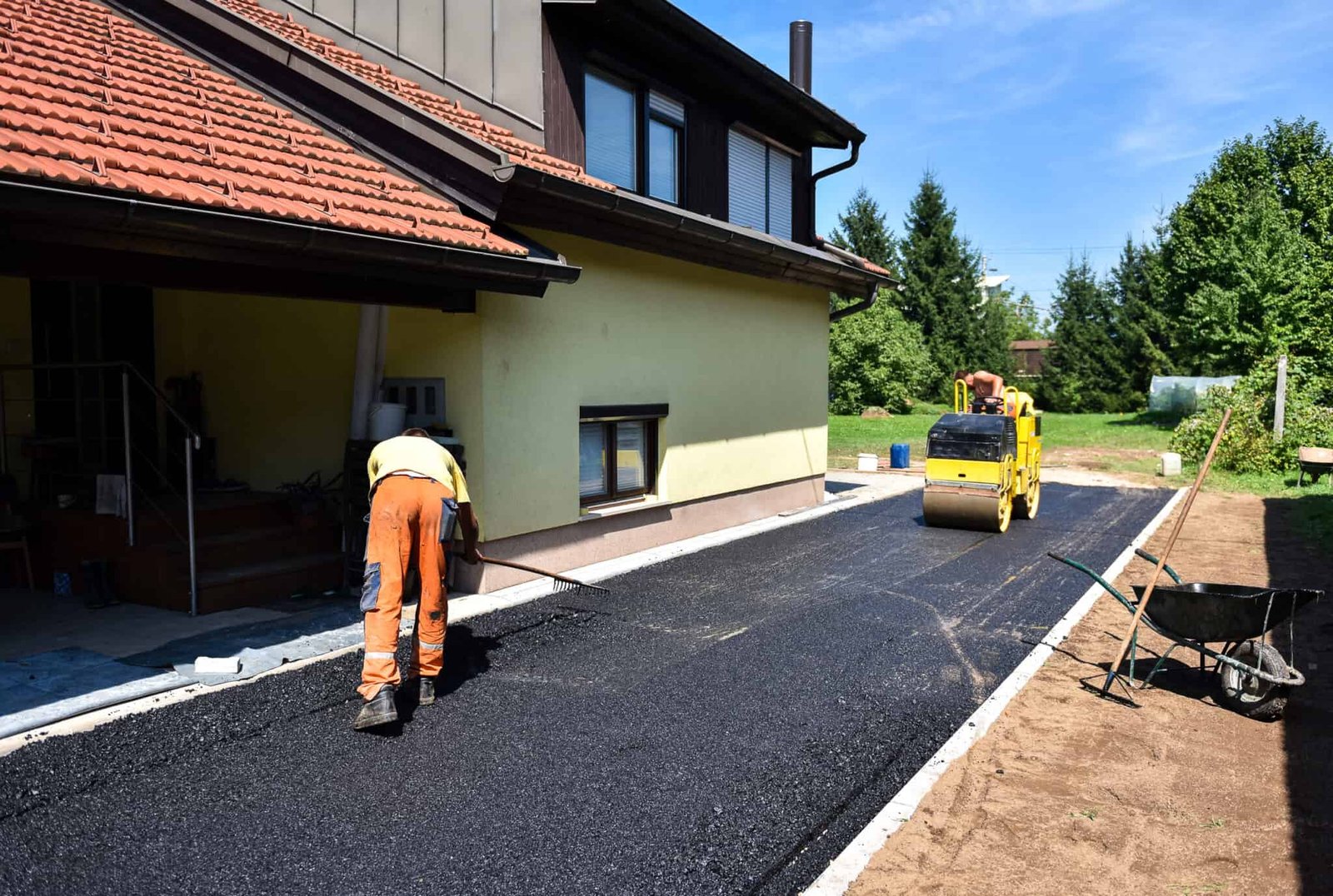Estimated reading time: 6 minutes
As climate change and resource depletion become increasingly urgent global concerns, the construction industry is under more pressure than ever to reduce its environmental footprint. One of the most overlooked yet highly impactful areas in sustainable infrastructure is the development of eco-friendly asphalt.
This guide explores the what, why, and how of environmentally responsible asphalt solutions—from recycled paving materials to energy-efficient production techniques. Whether you’re a city planner, civil engineer, contractor, or eco-conscious homeowner, this long-form guide will provide you with everything you need to make informed decisions about sustainable road construction and paving.
What is Eco-Friendly Asphalt?
Eco-friendly asphalt, also known as sustainable or green asphalt, refers to paving materials and practices that aim to reduce environmental harm, conserve natural resources, and promote circular economy principles. Rather than relying solely on virgin materials and fossil fuels, eco-friendly asphalt often integrates recycled, reclaimed, or renewable components, and is manufactured using processes that emit fewer greenhouse gases.
This type of asphalt can include:
- Recycled Asphalt Pavement (RAP)
- Warm-Mix Asphalt (WMA)
- Porous/permeable asphalt
- Bio-based asphalt binders
- Plastic waste-integrated asphalt
Environmental Problems with Traditional Asphalt
To appreciate the value of eco-friendly alternatives, we must first understand the environmental toll of conventional asphalt:
1. High Carbon Emissions
Producing hot-mix asphalt requires heating aggregate and bitumen to temperatures up to 160°C (320°F). This process consumes fossil fuels and contributes significantly to CO₂ and volatile organic compound (VOC) emissions.
2. Dependence on Petroleum
Bitumen, the binding agent in asphalt, is a byproduct of crude oil refining—a non-renewable and heavily polluting resource.
3. Limited Recycling
Traditional paving often discards old asphalt instead of recycling it, contributing to landfill waste and unnecessary mining of new materials.
4. Poor Water Drainage
Conventional asphalt is impermeable, which worsens stormwater runoff, increases flood risks, and carries surface pollutants into nearby water bodies.
Types of Eco-Friendly Asphalt Solutions
Let’s explore the leading types of sustainable asphalt technologies and how they function:
1. Reclaimed Asphalt Pavement (RAP)
RAP involves grinding and reusing old asphalt from roads, parking lots, and other pavements. It replaces a percentage of virgin aggregate and bitumen in new asphalt mixes.
Benefits:
- Reduces raw material usage by up to 40%
- Cuts transportation costs and emissions
- Performs comparably to new asphalt
Example Use Case: Many U.S. state departments of transportation allow 15–30% RAP in public road projects.
2. Warm-Mix Asphalt (WMA)
WMA uses chemical or organic additives that allow asphalt to be produced at lower temperatures—typically 20–40°C cooler than hot-mix asphalt.
Environmental Advantages:
- 30–50% lower CO₂ emissions
- Improves worker safety (less fume inhalation)
- Allows longer transport and installation time
Common in: Urban infrastructure, highways, airport runways
3. Porous or Permeable Asphalt
This innovative surface allows water to seep through, reducing stormwater runoff and recharging groundwater.
Why it matters:
- Helps mitigate urban flooding
- Reduces heat island effects
- Improves road safety during rainfall
Best For: Car parks, residential driveways, green cities
4. Bio-Based Binders
Instead of using petroleum-based bitumen, bio-binders are made from renewable plant materials like:
- Lignin (from wood)
- Algae oil
- Soybean oil
- Waste vegetable oil
Pros:
- Fully renewable
- Biodegradable
- Compatible with RAP
Emerging Markets: Scandinavia, parts of North America
5. Plastic-Modified Asphalt
Recycling plastic waste into asphalt helps address two problems at once—durable roads and less plastic in landfills.
Performance:
- Enhanced tensile strength
- Resistant to rutting and cracking
- Lifespan of 20–30 years
Sustainability Note: A 1-kilometre stretch of plastic-infused road can use the equivalent of 1 million plastic bags!
Benefits of Eco-Friendly Asphalt
| Benefit Area | Impact |
|---|---|
| 🌿 Environmental | Less air pollution, reduced plastic/bitumen use, better stormwater control |
| 🛠️ Structural | Stronger, longer-lasting pavement in many cases |
| 💵 Economic | Lower long-term maintenance, fuel cost savings |
| 👷 Health & Safety | Reduced exposure to fumes and toxic materials |
Additional benefits:
- Quieter roads (porous asphalt absorbs sound)
- Tax credits or green building incentives
- Supports ESG (Environmental, Social, Governance) goals
Eco-Friendly Asphalt vs. Traditional Asphalt
| Feature | Traditional Asphalt | Eco-Friendly Asphalt |
|---|---|---|
| Production Temperature | ~160°C (Hot-Mix) | ~100–140°C (WMA) |
| Material Source | 100% virgin materials | Recycled + renewable sources |
| Binder Type | Petroleum-based | Bio-based or modified |
| Stormwater Runoff | High | Low (porous) |
| Greenhouse Gas Emissions | High | Reduced by 20–40% |
| Recyclability | Limited | High (especially RAP) |
| Installation Conditions | Requires warm/dry weather | More flexible with WMA |
How Is Eco-Friendly Asphalt Made?
The manufacturing process varies based on the type, but typically includes:
- Sourcing recycled materials (RAP, plastics, biomass oils)
- Mixing at controlled temperatures with proper additives
- Testing for density, durability, and permeability
- Laying and compacting using standard paving machines
- Quality assurance checks post-installation
Sustainable asphalt plants often use renewable energy and incorporate dust collection systems to further reduce environmental impact.
Common Applications and Use Cases
Eco-friendly asphalt is versatile and suitable for:
- 🏠 Residential: Green driveways, shared access roads, housing estates
- 🏙️ Commercial: Shopping centres, office parks, airport runways
- 🛣️ Municipal: Roads, roundabouts, bike lanes, bus lanes
- 🌳 Green Infrastructure: Urban parks, nature trails, low-impact developments
Challenges and Limitations
- Higher Upfront Costs: Especially with newer technologies (e.g. bio-binders, plastics)
- Limited Supplier Availability: Not all regions have access to green mixes
- Regulatory Hurdles: Public road projects may require specific material approvals
- Learning Curve for Contractors: Requires training and adjustment
However, these barriers are rapidly diminishing as demand and innovation grow.
Cost Comparison and Long-Term ROI
While traditional asphalt may seem cheaper upfront, sustainable options offer better ROI over time.
| Cost Area | Traditional Asphalt | Eco-Friendly Asphalt |
|---|---|---|
| Initial Cost (per m²) | Lower | Slightly higher |
| Maintenance Frequency | High | Lower (esp. plastic/RAP) |
| Lifespan | 10–15 years | 20–30 years |
| Incentives Available | No | Often Yes (grants, LEED) |
Overall, eco-friendly asphalt offers more value in the long run—both financially and environmentally.
Green Certifications and Standards
When choosing or specifying sustainable asphalt, look for:
- LEED Points (Leadership in Energy and Environmental Design)
- Greenroads Certification
- ISO 14001 (Environmental Management Systems)
- Environmental Product Declarations (EPDs)
Working with a certified contractor can also help earn compliance credits for government or green building projects.
Future Innovations in Sustainable Paving
The future is bright for eco-friendly asphalt:
- Self-Healing Roads using induction or microcapsule tech
- Solar Roadways: Asphalt embedded with solar panels
- Carbon-Negative Asphalt: Binders that capture more CO₂ than they emit
- Smart Roads with IoT sensors for traffic and maintenance data
- Modular Pavement Systems that are replaceable and 100% recyclable
Frequently Asked Questions (FAQs)
Q1: Is eco-friendly asphalt more expensive?
Yes, but only slightly. Over time, it saves money in repairs, energy use, and maintenance.
Q2: Can it be used for highways?
Absolutely. RAP, WMA, and plastic-infused asphalts are already used in highways across the US, UK, and India.
Q3: Is porous asphalt slippery when wet?
No. In fact, it’s safer—its permeability reduces water pooling, improving traction.
Q4: How long does green asphalt last?
Typically 20–30 years depending on the mix and traffic conditions.
Building Roads for a Greener Future
Eco-friendly asphalt represents more than just a material innovation—it’s a philosophy of sustainability in infrastructure. As cities expand and climate concerns mount, embracing green paving isn’t just wise—it’s necessary.
Whether you’re laying a driveway or designing a smart city, now is the time to consider eco-conscious alternatives that protect the planet while delivering lasting performance.



